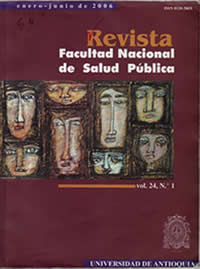Technology at the service of environment
DOI:
https://doi.org/10.17533/udea.rfnsp.287Keywords:
Teledetection, technology, environment, satellite communicationsAbstract
Teledetection technique offers great possibilities for the achievement of advance in the knowledge of nature although not everything expected has been accomplished yet, as there are still important improvements to perform in space, spectral and temporary resolution of data. In addition, a greater scientific rigor in the interpretation of obtained results is necessary, trying not to draw definitive conclusions from environmental studies performed with teledetection. Models elaborated to process data obtained from teledetection should eliminated effects caused by variability in collection conditions, distortion caused by the atmosphere and the influence of parameters such as sun position, slope, exposition and altitude.
Downloads
References
(1). Guillot CH. Rapport de synthèse, C.R Table ronde C. N.R. S. écosystèmes bocagers, Rennes; 1976.
(2). Tricart JL. Paysage et écologie. Revue de Géomorpholo-gie Dynamique: Geodynamique Externe. Etud Integreedu Milieu Naturel 1979;28(3):81-95.
(3). Allan JA. Land use changes in land use in the Urla areaof Aegean Turkey. En: Van Genderen JL, Collins WG.(eds.) Monitoring environmental change by remote sen-sing. Birmingham: The Remote Sensing Society; 1977.
(4). Thompson LL. Remote sensing using solid state arraytechnology. Photogrammetric Eng Remote Sensing1979;45:47-55.
(5). González F, Cuevas JM. Los satélites de recursos naturales y sus aplicaciones en el campo forestal. Madrid:Instituto Nacional de Investigaciones Agrarias; 1982.
(6). Townshend JR. The spatial resolving power of earth re-sources satellites. Prog Phys Geogr 1981;5(1):32-55. DOI: https://doi.org/10.1177/030913338100500102
(7). Maynard PT, Strahler AH. The logit classifier, a generalmaximum likelihood discriminant for remote sensingapplications. En: International Society of Electrical andElectronic Engineers. Proceedings of the Fifteenth Inter-national Symposium on Remote Sensing of Environment.Ann Arbor, MI: 1981.
(8). Megier J. Multi-temporal digital analysis of Landsat datafor inventory of poplar planted groves in North Italy”,proceedings of the International Symposium on imageProcessing, Interactions with photogrammetry and RemoteSensing, Graz. 1977 P. 135-140.
(9). Swain PH, Siegel H, Smith BW. A method for classifyingmultispectral remote sensing data using context. p. 343-352. En: Proceedings of the Symposium on MachineProcessing Of Remotely Sensed Data. West Lafayette, IN:Purdue University; 1979.
(10). Fleming MD, Hoffer RM. Machine processing of Lands-at MSS data and DMA topographic data for forest covertype mapping. p. 377-390. En: Proceedings of the Sym-posium on Machine Processing Of Remotely Sensed Data.West Lafayette, IN: Purdue University; 1979.
Downloads
Published
How to Cite
Issue
Section
License
Copyright (c) 2023 Francisco Sacristán

This work is licensed under a Creative Commons Attribution-NonCommercial-ShareAlike 4.0 International License.
The contents of the articles are the responsibility of the authors
The editorial committee has editorial independence from the National School of Public Health "Héctor Abad Gómez" of the University of Antioquia.
The editorial committee is not responsible for aspects related to copying, plagiarism or fraud that may appear in the articles published in it.
When you are going to reproduce and disclose photographs or personal data in printed or digital format, informed consent is required. Therefore, this requirement is required of the author at the time of receipt of the manuscript.
Authors are responsible for obtaining the necessary permissions to reproduce any material protected by reproduction rights.
The authors preserve the moral rights and assign the economic rights that will correspond to the University of Antioquia, to publish it, distribute electronic copies, include them in indexing services, directories or national and international databases in Open Access, under the Creative Commons Attribution license -Not Commercial-Share Equal 4.0 International Commercial (CC BY-NC-SA) which allows others to distribute, remix, retouch, and create from the work in a non-commercial way, as long as the respective credit and license are granted. new creations under the same conditions.
The authors will sign the declaration of transfer of economic rights to the University of Antioquia, after the acceptance of the manuscript.
The editorial committee reserves the right to reject the articles whose authors do not offer satisfactory explanations about the contribution of each author, to meet the criteria of authorship in the submission letter. All authors must meet the four criteria of authorship according to ICMJE: "a) .- That there is a substantial contribution to the conception or design of the article or to the acquisition, analysis or interpretation of the data. b) That they have participated in the design of the research work or in the critical review of its intellectual content. c) .- That has been intervened in the approval of the final version that will be published.d). That they have the capacity to respond to all aspects of the article in order to ensure that issues related to the accuracy or integrity of any part of the work are adequately investigated and resolved. "












 --
--  --
--
